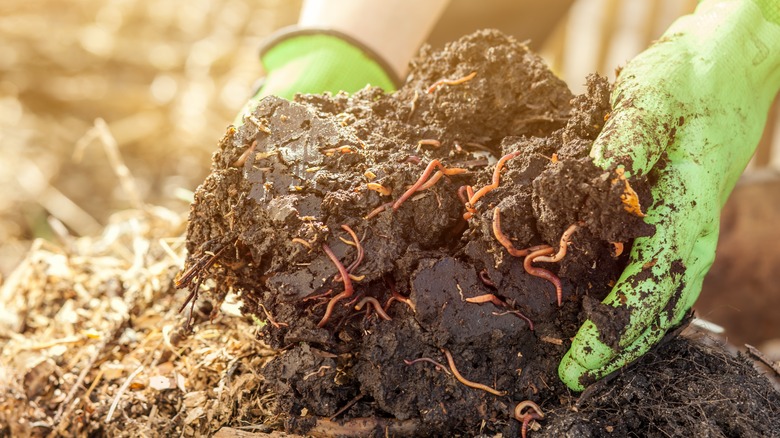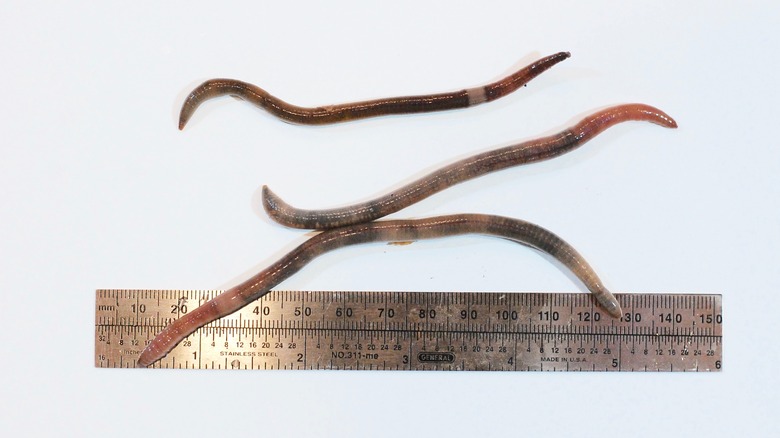What Are Jumping Worms And Why Are They Bad In The Garden?
Jumping worms are becoming an increasing topic of concern for American gardeners. These invasive worms have no natural predators and are said to have a negative effect on everything from soil to other desirable earthworm species. They are particularly destructive when it comes to garden soil, leaving it depleted of nutrients and vulnerable to erosion.
The jumping worm, also known as the Asian jumping worm or Amynthas agrestis, is a species that is native to East-Central Asia. It is also known as the Jersey wriggler, the Alabama jumper, and even the "crazy worm." As these common names suggest, this worm has a tendency to wriggle vigorously and thrash about from side to side when disturbed, almost seeming like it's "jumping." It does this to deter predators.
These worms were introduced to North America in the late 1800s but have only recently begun to spread into wider habitats, primarily in the Northeast and Midwest United States. Most of the jumping worms now found in the U.S. are believed to have come from Japan and Korea. It's not known exactly why or how they have begun to spread so invasively, but it's most likely due to commercial trade in agricultural products such as soil, mulch, and plants. These worms reproduce in cocoons that are very hardy in extremely cold temperatures, allowing them to rapidly increase their numbers — even in harsh weather conditions.
How they damage gardens
Jumping worms have a number of negative effects on gardens. First, they tend to drive out other earthworm species, possibly because they reproduce more quickly. They reproduce on their own without mates (referred to as "parthenogenic" reproduction) and can produce two rounds of offspring in one year, compared to one for European earthworms. In their native habitats, jumping worms have natural predators that have evolved within their ecosystems. But in North America, they have no predators, so their populations increase quickly.
Jumping worms also eat voraciously. Their vigorous appetites mean they chew through leaf litter and other organic matter that normally breaks down slowly and feeds soil. They digest these nutrients quickly and leave behind castings, which are small mounds of excreted matter. Notably, the castings left behind by jumping worms are different from those left by other worms — they have a dry, crumbly appearance and resemble used coffee grounds.
The castings of normal earthworms are usually good for soil and are even sold as compost. But the dried castings of jumping worms have a thinner composition and are easily washed away by rain, so they don't provide any soil nutrients. Over time, soil health can be rapidly depleted by jumping worms, which can then affect the health and viability of trees, food crops, flowers, shrubs, and grass. When these native species die off due to poor soil structure, more invasive plant species can gain the upper hand.
[Featured image by Njh5880 via Wikimedia Commons | Cropped and scaled | CC BY-SA 4.0]
How to identify and get rid of jumping worms
In addition to their tendency to wriggle furiously, jumping worms also tend to be a bit more slender and less fat than European earthworms. The light-colored band around their bodies is also lighter (nearly white) as opposed to light pink. These worms also tend to stay near the surface of the soil, whereas ordinary earthworms burrow deeper. This is part of why they deplete soil nutrients — they gobble up all the organic matter near the surface. Once you disturb jumping worms in the soil surface, you will likely find more of them nearby.
There are no known treatments or preventives for jumping worms at the moment. However, you should remove them from your garden when you see them. One good method is to use what's called a "mustard pour." Simply mix some powdered mustard into water and pour it over the suspected area and the jumping worms should come wriggling to the surface. Then you can scoop them up with gloved hands or a shovel. (Birds might try to come eat them, too.) Don't just move them to another part of the garden. Instead, drown them in a bucket of white vinegar, or, if it's a hot sunny day, place them on a large section of concrete or asphalt to kill them. Don't feel bad — these invasive worms are a menace!

